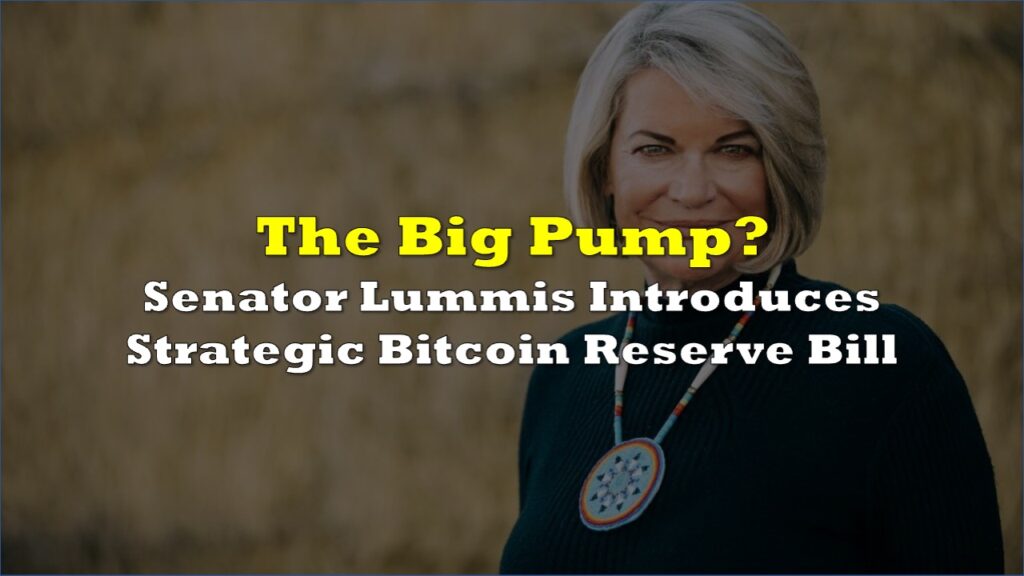Michael Saylor, executive chairman of MicroStrategy (NASDAQ: MSTR) and one of the most outspoken advocates for Bitcoin, has drawn sharp criticism after making controversial claims about the supposed “risk-free” nature of Bitcoin investments. During a guest appearance on Impact Theory, a podcast hosted by Tom Bilyeu, Saylor likened Bitcoin’s annual returns to a guaranteed outcome, citing an alleged 60% yearly appreciation against the U.S. dollar over the past decade.
The remarks, part of an extended metaphor-heavy conversation, are being labeled as reckless and misleading, particularly given MicroStrategy’s substantial exposure to Bitcoin and Saylor’s position at the helm of a publicly traded company. Critics, including financial experts and skeptics of cryptocurrency, argue that his framing of Bitcoin as a “risk-free” asset glosses over its inherent volatility and speculative nature.
“60% Risk-Free”
In his interview, Saylor repeatedly emphasized Bitcoin’s performance over the last decade, using historical data to assert that the cryptocurrency’s value has risen 60% annually.
“Bitcoin is going up 60% a year against the dollar… since MicroStrategy made its first investment four years ago, it’s 60%,” he claimed. “But if you stretch back 6, 8, 10 years, I think it’s also 60%. So like a decade. But you can measure it back a decade, and you see it’s going up 60% a year. And it’s 60 volatility… against the dollar. So you should think of Bitcoin as an asset… The person with a million dollars of cash is going to have a million dollars of cash in a decade. A person with a million dollars of Bitcoin is going to double their capital every 18 months if they just hold on to it.”
While Saylor acknowledged Bitcoin’s volatility, he dismissed concerns about risk by reframing volatility as a feature, not a flaw. Comparing Bitcoin to a speeding train or a turbulent waterfall, he argued that Bitcoin’s ups and downs are an inherent part of its “thermodynamically sound” structure, which he believes positions it as the most efficient store of value available.
“The fundamental risk of Bitcoin,” he said, “is the existential potential risk of an extinction-level event in Bitcoin.” He pointed to far-fetched scenarios such as space aliens confiscating Bitcoin or a cyber virus destroying the network as the only true risks to the cryptocurrency. He then likened this “existential risk” to everyday dangers like crossing the street or eating potentially poisoned food.
While Saylor’s comments were intended to present Bitcoin’s volatility as a normal feature of a high-performing asset, critics argue that his statements oversimplify and minimize the substantial risks associated with cryptocurrency investments. This cavalier dismissal of more practical risks—such as regulatory crackdowns, macroeconomic downturns, or sustained price declines—has drawn widespread criticism.
I don't see how the SEC allows Saylor, the CEO of a public company that's in the business of borrowing money to buy Bitcoin, to guarantee a 60% annual return on Bitcoin, or describing a Bitcoin investment as being "risk free." The SEC has rules that specifically prohibit this.
— Peter Schiff (@PeterSchiff) December 28, 2024
In his characteristic style, Saylor used elaborate metaphors to describe Bitcoin’s performance, likening it to the flow of water in a mountain lake:
“I’m a hiker, and I come across a mountain lake, and the mountain lake has 500 trillion gallons of water in it. I don’t know how it got there, but it’s there… There’s a waterfall, and it’s very turbulent. Water is turbulent in the waterfall; water is not turbulent in a glassy lake. So the turbulence is volatility… If I create a dam near that waterfall, I put a turbine on the dam… I make electricity. And then, if I’m really smart, I run the electric power line to a village down in the valley, and I light up the village,” he posited.
He then added: “Now someone can come along that doesn’t understand physics and they can say, ‘Good idea, junior, but what are you going to do when the water stops flowing downhill?’ Well, I actually think the water’s flowing downhill because of gravity–Newton solved that for me. And then someone else comes along and says, ‘Good idea, junior, but what are you going to do when you run out of water in the lake?’ Well, there’s 500 trillion gallons and I take out my calculator and a billion gallons or whatever it’s going to last a long time.”
He likened the process to the constancy of precipitation: “The sun keeps shining on the ocean and the ocean keeps lifting the water out of the ocean and it drops it on this mountain and that’s why there’s water in the mountain. But you’re right, there’s some kind of natural limit and I suppose there’s a limit to the amount of energy I can pull off of this dam but it’s a large number.”
Bitcoin’s price appreciation over the past decade is undeniable, but framing these gains as a “risk-free” return ignores key nuances. Bitcoin’s extreme volatility—often exceeding that of traditional assets—makes it inherently risky. In 2024 alone, Bitcoin’s price soared past $108,000 but experienced sharp corrections as global economic and regulatory pressures mounted.
While Saylor’s 60% figure may hold true as an average annual return over select timeframes, it omits the numerous periods when Bitcoin has experienced significant drawdowns, including losses of over 80% during bear markets.
Additionally, Saylor’s optimistic projections are rooted in the assumption of continued adoption and price appreciation, scenarios that are far from guaranteed. Critics argue that by presenting these returns as inevitable, Saylor risks misleading investors who may not fully understand Bitcoin’s speculative nature.
History of Bold Claims
This isn’t the first time Saylor’s Bitcoin rhetoric has caused controversy. Since 2020, he has steered MicroStrategy into uncharted territory, transforming the company from a business intelligence software firm into a Bitcoin investment vehicle. The company has acquired 444,262 BTC at an average purchase price of $62,257, spending $27.7 billion since then. As of December 2024, the company owns 444,262 BTC, valued at over $41.4 billion.
To finance these purchases, MicroStrategy has raised funds primarily through convertible debt, a high-risk financial instrument that allows creditors to convert their debt into equity. While this strategy has paid off during Bitcoin rallies, critics warn that it leaves the company dangerously exposed to Bitcoin’s notorious price swings.
Financial commentators have blasted Saylor’s rhetoric as misleading. Peter Schiff, a well-known Bitcoin skeptic, accused Saylor of violating U.S. Securities and Exchange Commission regulations by effectively “guaranteeing” returns on an asset as speculative as Bitcoin. “The SEC has rules that specifically prohibit guaranteeing returns, especially ones described as ‘risk-free,’” Schiff said.
21/21 Plan
MicroStrategy’s bet on Bitcoin is emblematic of Saylor’s broader philosophy, which views the cryptocurrency as the ultimate store of value. The company’s recent “21/21 plan” aims to raise $42 billion—half through equity and half through fixed-income securities—to finance further Bitcoin purchases.
While this strategy aligns with Saylor’s belief in Bitcoin’s long-term potential, it has also heightened concerns about the company’s financial stability. If Bitcoin prices were to plummet, MicroStrategy could face a cascade of challenges, including potential shareholder dilution and difficulties repaying its debts.
Novacula Occami, a financial analyst, highlighted the precariousness of this approach: “If BTC goes to $1k, MSTR can only repay its debt by selling more shares or its Bitcoin—basically a downward spiral to bankruptcy.”
Saylor’s claims have drawn the ire of critics who view his rhetoric as both irresponsible and potentially harmful. By describing Bitcoin as “risk-free,” Saylor risks misleading retail investors into believing that Bitcoin’s historical performance guarantees future gains.
“Volatility is not risk,” Saylor said during the interview, citing Howard Marks. While this is a common argument among Bitcoin advocates, it ignores the very real risks posed by Bitcoin’s price fluctuations, regulatory scrutiny, and susceptibility to broader market forces.
What’s your predicted BTC annual return (%) over the next 21 years?
— Michael Saylor⚡️ (@saylor) December 29, 2024
For MicroStrategy, the stakes are higher than ever. The company’s financial health is now inextricably tied to Bitcoin’s performance, making it a high-risk bet for shareholders. As Bitcoin’s price hovers around $94,000, Saylor’s bold claims and high-stakes strategy will continue to shape the conversation around cryptocurrency—and the fortunes of his company.
Whether his vision will prove prescient or reckless remains to be seen, but one thing is clear: Saylor is all-in on Bitcoin, and he’s taking MicroStrategy along for the ride.
Information for this briefing was found via CoinTelegraph and the sources mentioned. The author has no securities or affiliations related to this organization. Not a recommendation to buy or sell. Always do additional research and consult a professional before purchasing a security. The author holds no licenses.









